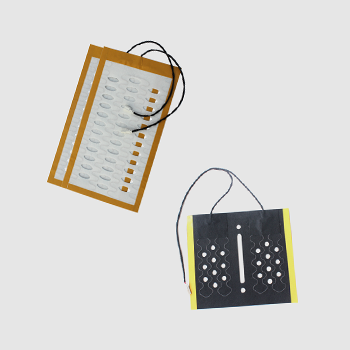The global research and development progress of car heating pads has seen significant advancements in recent years, mainly reflected in the following aspects:
1. Material Innovation
- Carbon Fiber and Graphene: These materials are gradually replacing traditional metal heating elements due to their excellent thermal conductivity, lightweight, and durability.
- Nanomaterials: The application of nanotechnology has improved the thermal efficiency and uniformity of heating pads while enhancing durability.
2. Intelligent Control
- Temperature Regulation: Modern heating pads are equipped with intelligent temperature control systems, allowing users to adjust the temperature via mobile apps or in-car systems. Some products also feature automatic adjustment functions.
- Sensor Integration: By integrating temperature and humidity sensors, heating pads can automatically adjust heating intensity based on environmental conditions, improving comfort and reducing energy consumption.
3. Energy Efficiency Improvement
- Low-Power Design: New heating pads adopt low-power designs to reduce the burden on vehicle batteries and extend battery life.
- Solar Assistance: Some high-end products have begun incorporating solar charging technology to further reduce energy consumption.
4. Health and Comfort
- Far-Infrared Heating: Far-infrared heating technology can penetrate human tissues, promote blood circulation, relieve fatigue, and provide a healthier heating experience.
- Massage Function: Some heating pads combine vibration massage functions to enhance comfort, especially suitable for long-distance driving.
5. Safety Performance
- Overheat Protection: Modern heating pads are equipped with overheat protection functions to prevent safety hazards caused by excessive temperatures.
- Fire-Resistant Materials: The use of flame-retardant materials ensures that heating pads will not cause fires in extreme conditions.
6. Market Trends
- Customization: The market demand for personalized designs is increasing, with heating pads being customizable according to seat shapes and user preferences.
- Eco-Friendly Materials: With growing environmental awareness, more heating pads are being made from recyclable and eco-friendly materials.
7. Regional Development
- North America and Europe: These regions have a higher demand for high-end, intelligent heating pads, driving technological innovation.
- Asian Market: Countries such as China, Japan, and South Korea have made rapid progress in material research and production technology, becoming major global production bases.
8. Future Outlook
- Wireless Charging Technology: Future heating pads may integrate wireless charging technology to further enhance user experience.
- AI and IoT: The application of AI and IoT technologies will make heating pads more intelligent, enabling automatic optimization of heating strategies based on user habits and environmental conditions.
Summary
The research and development of car heating pads have made significant progress in materials, intelligent control, energy efficiency, comfort, and safety. With technological advancements and growing market demand, future heating pads will become more intelligent, personalized, and environmentally friendly.
Significant Progress in Automotive Heating Pad Development
In recent years, the development of automotive heating pads has made significant progress, primarily reflected in the following aspects:
1. Material Innovation
- Carbon Fiber Materials: Due to their lightweight, durable, and efficient heating properties, carbon fiber materials have become a mainstream choice.
- Graphene Materials: With excellent thermal conductivity and rapid heating capabilities, graphene materials have enhanced the performance of heating pads.
2. Intelligent Control
- Temperature Regulation: Enables precise temperature control through smartphones or in-car systems.
- Zoned Heating: Supports independent temperature control for different areas such as the seat and backrest, improving comfort.
3. Energy Efficiency Improvement
- Energy-Saving Design: Utilizes low-power components and efficient heating technology to reduce energy consumption.
- Auto Shut-Off Function: Automatically turns off after prolonged inactivity to avoid energy waste.
4. Enhanced Safety
- Overheat Protection: Built-in sensors prevent excessive temperatures, reducing safety risks.
- Fire-Resistant Materials: Uses flame-retardant materials to further enhance safety.
5. Comfort Optimization
- Breathable Design: Improves material breathability to reduce discomfort during extended use.
- Massage Function: Some products integrate massage features to enhance the driving experience.
6. Eco-Friendly Trends
- Recyclable Materials: Adopts environmentally friendly materials to minimize environmental impact.
- Low Emissions: Reduces harmful substance emissions during production and use.
7. Market Applications
- Electric Vehicles: As electric vehicles become more popular, heating pads have become an essential feature for improving winter comfort.
- High-End Models: Increasingly, luxury vehicles are offering smart heating pads as standard or optional features.
8. Future Prospects
- Integrated Health Monitoring: Future heating pads may integrate health monitoring functions such as heart rate and body temperature.
- Solar Power Supply: Exploring the use of solar energy to power heating pads, further improving energy efficiency.
Summary
Automotive heating pads have made significant advancements in materials, intelligent control, energy efficiency, safety, and comfort. In the future, they are expected to become more widely adopted across various vehicle models and integrate more intelligent features.

